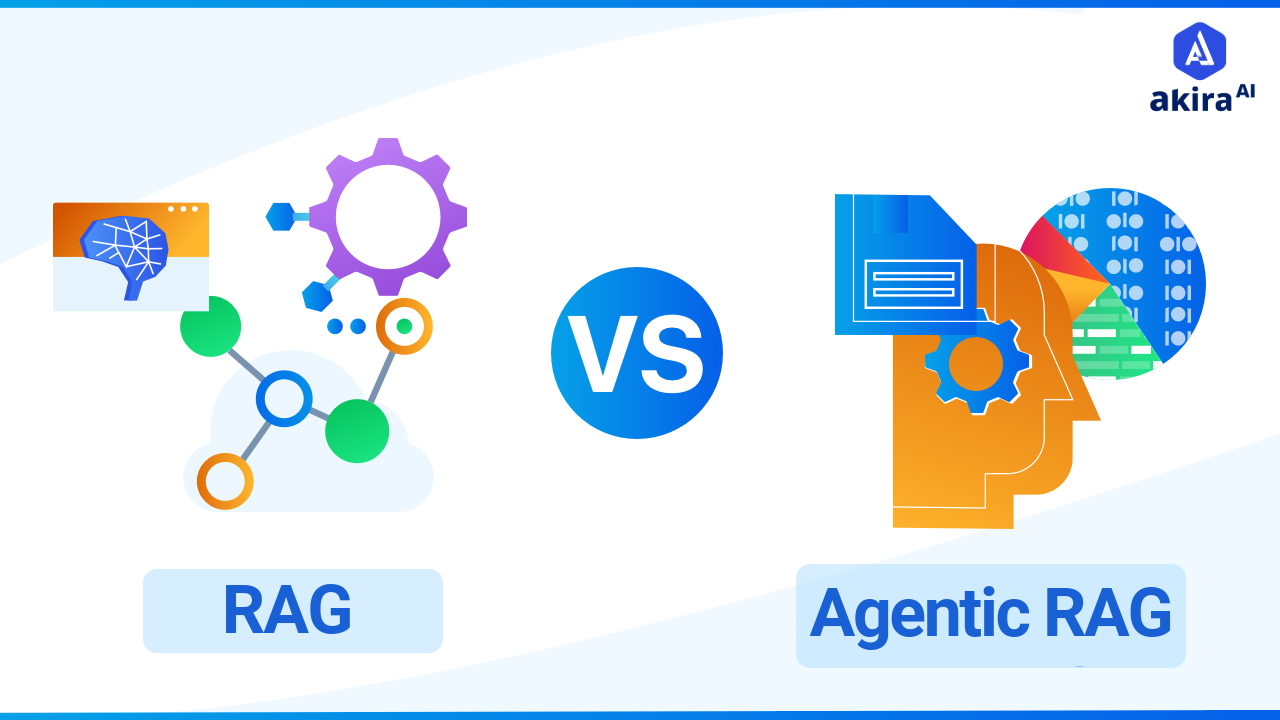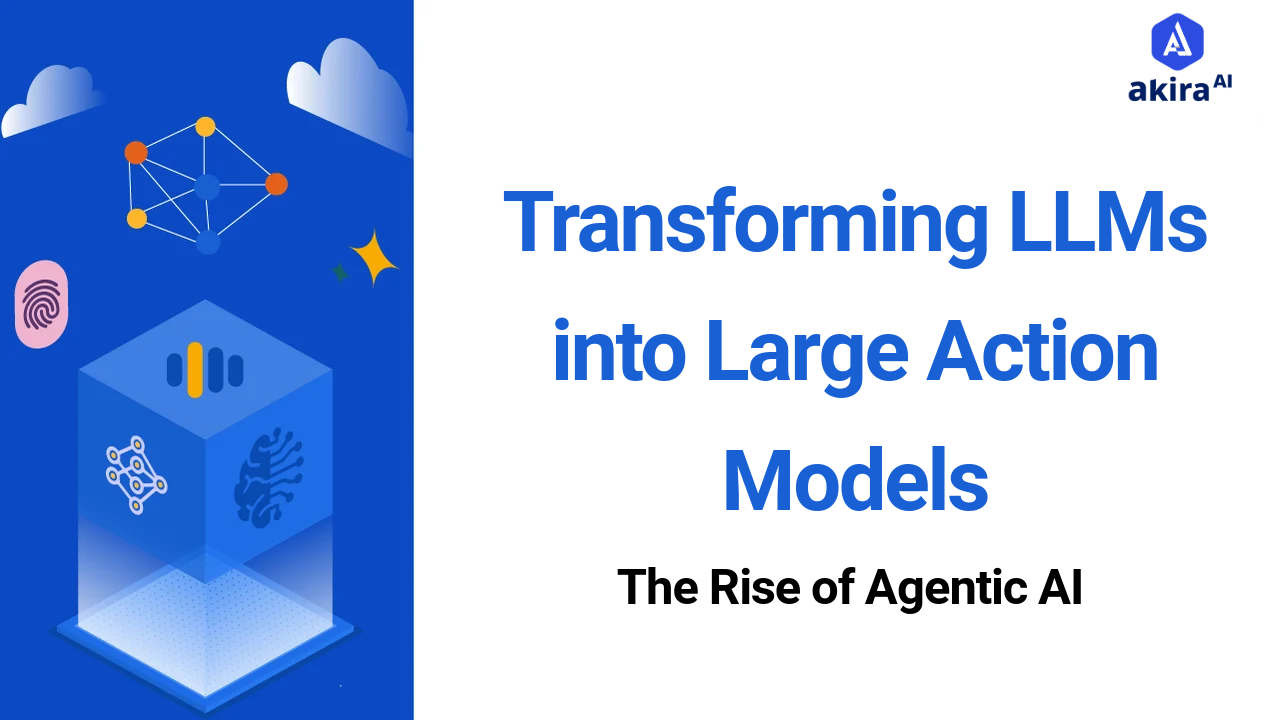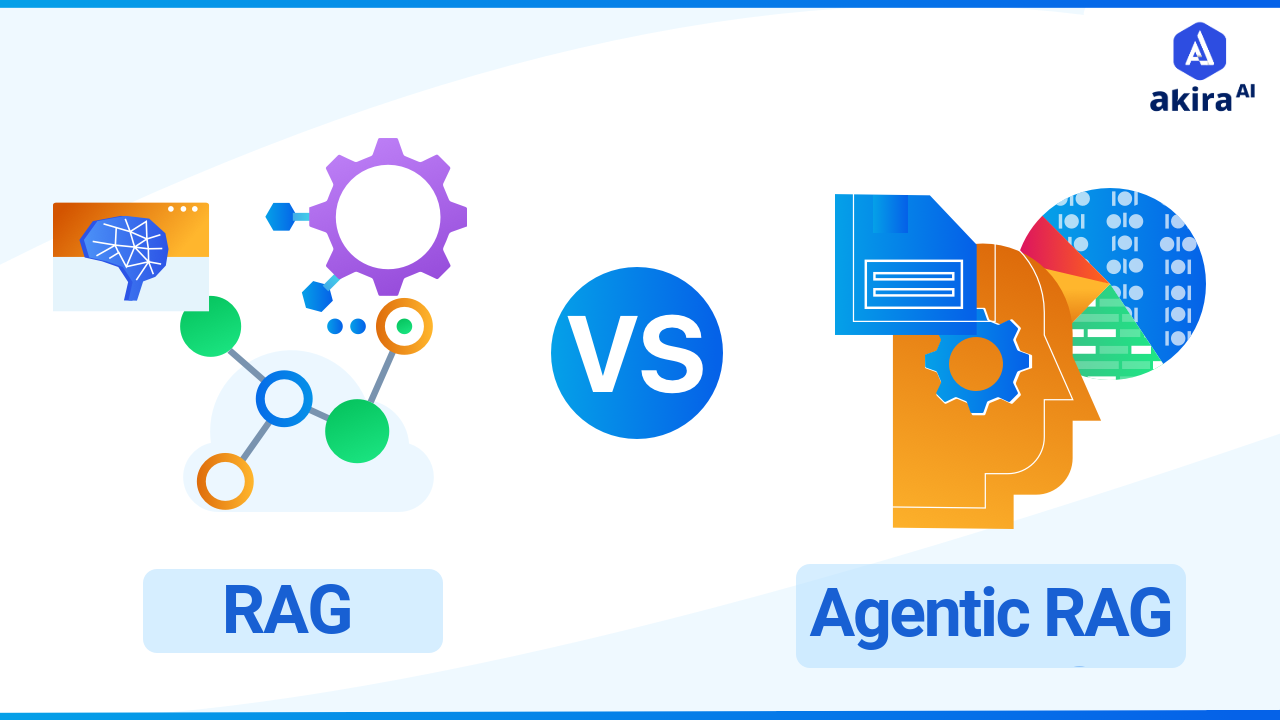Key Insights
-
Smarter Query Handling – Traditional RAG retrieves information in a static, one-step process, while Agentic RAG breaks down complex queries into sub-tasks and refines searches iteratively for deeper insights.
-
Enhanced Decision Intelligence – Agentic RAG integrates reasoning, multi-agent collaboration, and real-time knowledge updates, making it ideal for dynamic and high-stakes decision-making.
-
Greater Autonomy and Adaptability – Unlike Traditional RAG, which passively retrieves data, Agentic RAG continuously learns, adapts to context changes, and optimizes responses based on user interactions.

Large Language Models (LLMs) have revolutionized how we engage with knowledge. However, as they only address questions by tapping into the knowledge within their own company, the answers may not always be correct or as detailed as expected when encountering intricate questions. This is where Retrieval-Augmented Generation (RAG) comes into play, enabling LLMs to engage with privileged information from other sources, resulting in more grounded responses.
While the primary use case of standard RAG is querying a few documents, agentic RAG takes it a step further, establishing itself as a powerful solution for answering questions. It presents a new level of interface using AI agents.
What is RAG?
RAG (Retrieval-Augmented Generation) is an AI framework that combines the strengths of traditional information retrieval systems (such as search and databases) with the capabilities of generative large language models (LLMs). Combining your data and world knowledge with LLM language skills makes grounded generation more accurate, up-to-date, and relevant to your specific needs.
Challenges of Traditional RAG Implementation
-
System Architecture: The original RAG architecture has a straightforward pipeline with query text, a retriever that acquires relevant information and an LLM that generates the answers based on the gathered input.
-
Query Processing: Users submit queries, which are passed directly to the retriever with the objective of returning documents and pieces of information in the knowledge base.
-
Knowledge Base Interaction: The retriever looks for pertinent information from a static knowledge base. The knowledge base is usually updated at intervals and may not be presented as updated with the latest information.
-
Response Generation: It was agreed that the LLM comes up with a response merely on the basis of the information it obtains without further enhancement or qualification. This can restrict the extent and precision of the response.
-
Feedback Mechanism: There is little to no feedback; users can only contribute, but the system does not integrate feedback to learn between user interactions.
-
Complex Query Handling: Difficult questions may be difficult to answer well since using RAG for very simple queries does not decompose or handle many sub-tasks.
Implementation of RAG (Retrieval Augmented Generation)
 Fig1: Architecture Diagram of RAG
Fig1: Architecture Diagram of RAG
The architecture of Retrieval-Augmented Generation (RAG) comprises several key components that collaborate to deliver accurate and contextually relevant responses:
-
Client: An entry point for the users to submit their search queries, mostly using web or application interfaces.
-
Framework (e.g., LangChain, LlamaIndex): This interface interacts with different components. It deals with data interchange and outside-world interaction and employs parsers for queries and response generators.
-
Large Language Model (LLM): This model produces responses from the user query and contextual data obtained. It uses training to generate human-like text, which helps make the response information-based.
-
Contextual Data Retrieval: This method collects data from other sources and presupposes vectorization, i.e., data conversion into vector representations and storage in a vector database (for example, Quadrant, FAISS, or Pinecone for fast similarity search).
-
Response Generation: The contextual data retrieved by the LLM and the original query are utilised to form sensible and informative responses.
-
Client Response: The response is provided to the client. Thus, the interaction with users is complete, and users receive the fastest response.
Secure AI Framework Implementation for Enterprise Systems
What is Agentic RAG
Unlike many prior methods that rely exclusively on LLMs, agentic RAG uses intelligent agents to create a plan for addressing especially challenging questions involving sequential reasoning and occasional non-linguistic tools. They work like experienced information searchers who can search several documents, compare the information, synthesize a summary, and deliver comprehensive, conclusive, and accurate responses. This framework is easy to scale. Additional documents may be incorporated while each set of new documents is processed by one sub-agent.
Advantages of Agentic RAG
-
Enhanced System Architecture: The agentic RAG enhances the traditional RAG and it is composed of intelligent agents that control and coordinate several aspects of the pipeline to achieve an ideal interaction and processing.
-
Advanced Query Understanding: Agents take the intent of the user queries and break down queries into one or multiple sub-tasks that may need to be accomplished. It also enables precise information searching to enhance comprehensiveness and provide further insights.
-
Dynamic Knowledge Base Management: There are specifically devoted agents that both build and update the knowledge base as well as filter the data required for a specific query.
-
Optimized Response Generation: This is the capability of work that agents use to enhance the responses made by LLM. They integrate information from various sources and reinterpret data conflict in an attempt to provide a coherent and accurate picture.
-
Iterative Feedback Loop: An established feedback mechanism allows users to refine their queries or request additional information. Agents adapt the system based on user input, facilitating continuous interaction improvement.
-
Complex Query Handling: Agentic RAG excels in handling complex queries by coordinating multiple sub-tasks through agents. This orchestration allows for thorough exploration of topics, resulting in well-rounded answers.
-
Multimodal Capabilities: Agents can integrate various data types (text, images, audio), enabling the system to provide richer and more diverse responses to user queries.
Implementation of Agentic RAG Pipeline
1. Routing Agent
Fig2: Routing Agents in Agentic RAG
The routing agent is the initial component that transforms the input query and uses the LLM to determine which of the following RAG pipelines to apply. This presupposes a form of agentic reasoning applied by the LLM when it assesses a query and chooses the right pipeline, whether for summarizing or answering a posed query.
2. One-Shot Query Planning Agent
 Fig3: One-Shot Query Planning Agents
Fig3: One-Shot Query Planning Agents
This agent concentrates on decomposing a complex query into a set of simpler queries that can be easily paralleled. Every sub-query can run on diverse RAG pipelines based on different data types in various RAG systems.
3. Tool Use Agent
Fig4: Tool Use Agent
In situations where supplementary data is needed to optimize the query, that is, data from an API, a base, and so on, the tool use agent is employed. This particular agent gives the user most relevant documents in response to the initial query and adds the surrounding information.
4. ReAct Agent
 Fig5: ReAct Agent in RAG Application
Fig5: ReAct Agent in RAG Application
The ReAct agent embodies a more advanced approach by iteratively combining reasoning and actions. It integrates routing, query planning, and tool use into a single workflow. Upon receiving a user query, the agent identifies the necessary tools and gathers input.
Applications of Agentic RAG
RAG is used to cope with any simple questions and Agentic RAG is IAHF for real-time and intricate cases. These distinctions allow organisations to fine-tune their information search and recovery and their responses depending on the situation.
Customer Support: FAQ chatbots powered by static knowledge bases handle simple queries, while intelligent help-desks analyze complex problems, pulling data from multiple databases to offer detailed and contextual responses.
Healthcare: Basic applications provide lists of potential conditions based on reported symptoms, whereas advanced solutions integrate patient records and case studies to deliver personalized medical advice.
Finance: Simple bots manage account inquiries like balances or transaction history, while more sophisticated systems analyze real-time market trends and portfolio data for actionable financial recommendations.
Education: Course information retrieval systems provide basic academic details, but advanced tools compile original resources and support deep analysis for enhanced learning experiences.
E-Commerce: Customer service bots share general information about products and policies, while tailored assistants offer personalized recommendations, assess user preferences, and provide live inventory updates.
Human Resources: Self-service tools respond to common HR questions, while performance-focused systems analyze employee data to propose tailored development plans and growth strategies.
Marketing: Campaign overview tools retrieve basic information, while advanced agents analyze market trends and competitor strategies to craft data-driven marketing insights.
Agentic RAG vs Traditional RAG
|
Feature |
Traditional RAG |
Agentic RAG |
|
Retrieval Process |
Performs a single-step query to fetch relevant documents. |
Uses iterative, multi-step querying to refine search results dynamically. |
|
Reasoning Ability |
Passively retrieves and integrates external data. |
Uses reasoning and decision-making to determine the best retrieval strategy. |
|
Adaptability |
Limited to static retrieval; does not adjust based on context changes. |
Actively modifies retrieval approach based on prior responses and feedback. |
|
Memory |
Typically stateless—each query is independent. |
Can incorporate memory to track past interactions for better context awareness. |
|
Autonomy |
Fully dependent on predefined retrieval and generation rules. |
More autonomous, adjusting retrieval and synthesis strategies dynamically. |
|
Use Cases |
Simple Q&A, knowledge base lookups, and summarization. |
Complex decision-making, adaptive research, and multi-turn reasoning. |
Challenges and Ethical Considerations in Agentic RAG
As Agentic RAG systems become more autonomous and decision-driven, they bring both technical challenges and ethical concerns that must be addressed for responsible deployment.
Challenges
-
Complexity in Query Handling: Breaking down and processing multi-step queries requires advanced orchestration, increasing system complexity.
-
Scalability and Performance – Handling large-scale, real-time data retrieval while maintaining efficiency can be resource-intensive.
-
Conflicting Information Resolution – Integrating data from multiple sources can lead to inconsistencies that require sophisticated reasoning to resolve.
-
Bias and Fairness: Ensuring responses are unbiased and do not reinforce harmful stereotypes is critical for responsible AI adoption.
-
Transparency and Accountability: Users need visibility into how decisions are made, requiring explainability in agent-driven workflows.
-
Data Privacy and Security: Accessing and processing sensitive information must comply with data protection regulations to prevent misuse.
Addressing these challenges will be key to building trustworthy and effective Agentic RAG systems.
Future Trends in Agentic RAG
-
Dynamic Interaction with Contextual Awareness: Agentic RAG systems will dynamically retrieve and generate information, adapting responses based on real-time context.
-
Enhanced Multi-Agent Collaboration: Collaboration between specialized AI agents in RAG systems will enable more efficient and accurate task handling.
-
Personalized and Scalable Knowledge Retrieval: Future RAG models will tailor responses to user-specific needs while scaling across industries and applications.
-
Integration with Ethical AI Practices: Prioritizing transparency, privacy, and bias mitigation will be central to Agentic RAG development.
-
Autonomous Problem-Solving: Beyond retrieving information, Agentic RAG will autonomously resolve tasks, enabling hands-free solutions for users.
Next Steps with Agentic AI
Talk to our experts about implementing Agentic RAG and transforming your organization. Discover how industries and departments use Agentic Workflows and Decision Intelligence to become truly decision-centric


